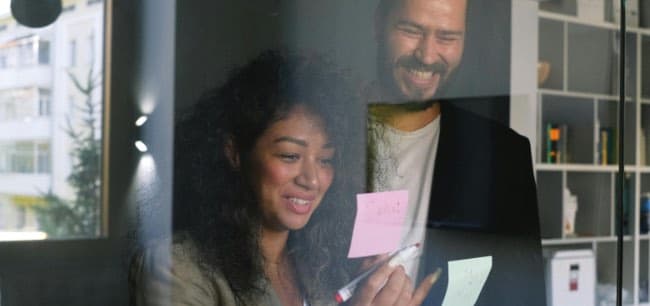Perception of Adult Autism Flat Facial Affect
Two common suppositions or beliefs about adult autism is that we cannot make eye contact and that we have a limited vocabulary of facial expressions. While these expressions of autism can be true for some or many of us, they can also be sticking points in relationships for everyone.
I want to remind all my readers of a supremely important point about ASD: if you’ve met one person with autism, you’ve met one person with autism. The Spectrum is an expansive place, and everyone with autism can find themself in their own unique location on the spectrum.
Making and sustaining eye contact can be difficult. Non-ASD people feel more engaged when others make eye contact with them. Think of it as shaking hands when saying hello. Techniques to improve eye contact are best shared in situations where eye contact can be practiced and reflected.
Facial expression is another important element of social and cultural communication that can share so much more than words alone. A flat facial affect, regardless of origin, can make others feel uncomfortable.
For persons with an anxious attachment, interacting with someone with a flat affect can signify abandonment or invoke fear. They might ask, “Are you mad at me?” or “Do you still like me?” In 1975, Ed Tronick conducted an experiment with infants and their mothers that demonstrated the impact a still face or flat facial affect has on how people interact and feel. Even 1-year-olds experience physical discomfort when they encounter a flat affect.
PUT ON A HAPPY FACE
My son has a t-shirt with nine identical images of Mr Spock from the original Star Trek. Each face is labeled with a different emotion: happy, sad, mad, glad, angry, etc. I’ve seen a more modern version with Darth Vader. When my mask is down, you could probably make a shirt with my photo, too.
Communicating with your face utilizes the same neural pathways as reading other’s faces and determining their emotions. As you start to identify how other’s faces present with their emotions, you can then build upon that knowledge to speak with your face.
Think of it as kinda like going to a foreign country and picking up a few of their customs and terms to fit in a bit better. A heartfelt “gratzie mille” can go a long distance when that is about the limit of your Italian.
As you begin to use your new language of facial expressions, you will need to make conscious decisions of when to look “happy”, “confused”, or “excited”. At first, you might feel foolish that you’re being disingenuous with your face. Watch other’s expressions to see how you’re doing and, if necessary, ask for feedback on what they think you’re feeling.
Even with adult autism, facial expressions can open a door to enhanced communication, improved relationships, and potentially so much more.







